Tom's Hardware Verdict
The Prime Mini from Steelseries comes very close to being an ultralight gaming mouse for everyone, but some design choices may not be to everyone’s taste.
Pros
- +
+ Light cabling prevents drag
- +
+ Incredibly responsive sensor and buttons
Cons
- -
Not ideal for all grip types and hand sizes
- -
DPI switching not accessible during gameplay by default, requires rebinding mouse buttons
- -
Switches aren’t as satisfyingly tactile as traditional mechanical switches
Why you can trust Tom's Hardware
Steelseries continues its streak of producing some of the best gaming mice with the Prime Mini, which will be a breath of fresh air for gamers with larger hands who have felt left out by other small-footprint mice. The shape of the Prime Mini allows it to sit comfortably in hands of various sizes – which isn't always the case in ultralight offerings.
The Prime Mini is aimed directly at competitive gamers with an extemely light, detachable cable to aid portability and super-smooth mouse feet for nearly friction-free movement. Button placement also feels just right – everything is within reach, regardless of the size of your hands, and it feels like care was taken to ensure accidental clicks don’t occur.
While not a true “one size fits all” mouse, the Prime Mini does come very close. Some gamers with very large hands may need to make some adjustments to their preferred grip, and not all design choices present in the Prime Mini will be to everyone’s taste. Read on to find out if the Prime Mini is a good fit for you.
Steelseries Prime Mini Specs
| Sensor Type | SteelSeries TrueMove Pro |
| Sensitivity | Up to 18,000 DPI |
| Polling Rates | 125, 250, 500, 1,000 Hz |
| Programmable Buttons | 5 |
| LED Zones and Colors | 1-zone RGB |
| Cable Length | 2m / 6.6 feet |
| Weight | 61g |
Design and Comfort of the Steelseries Prime Mini
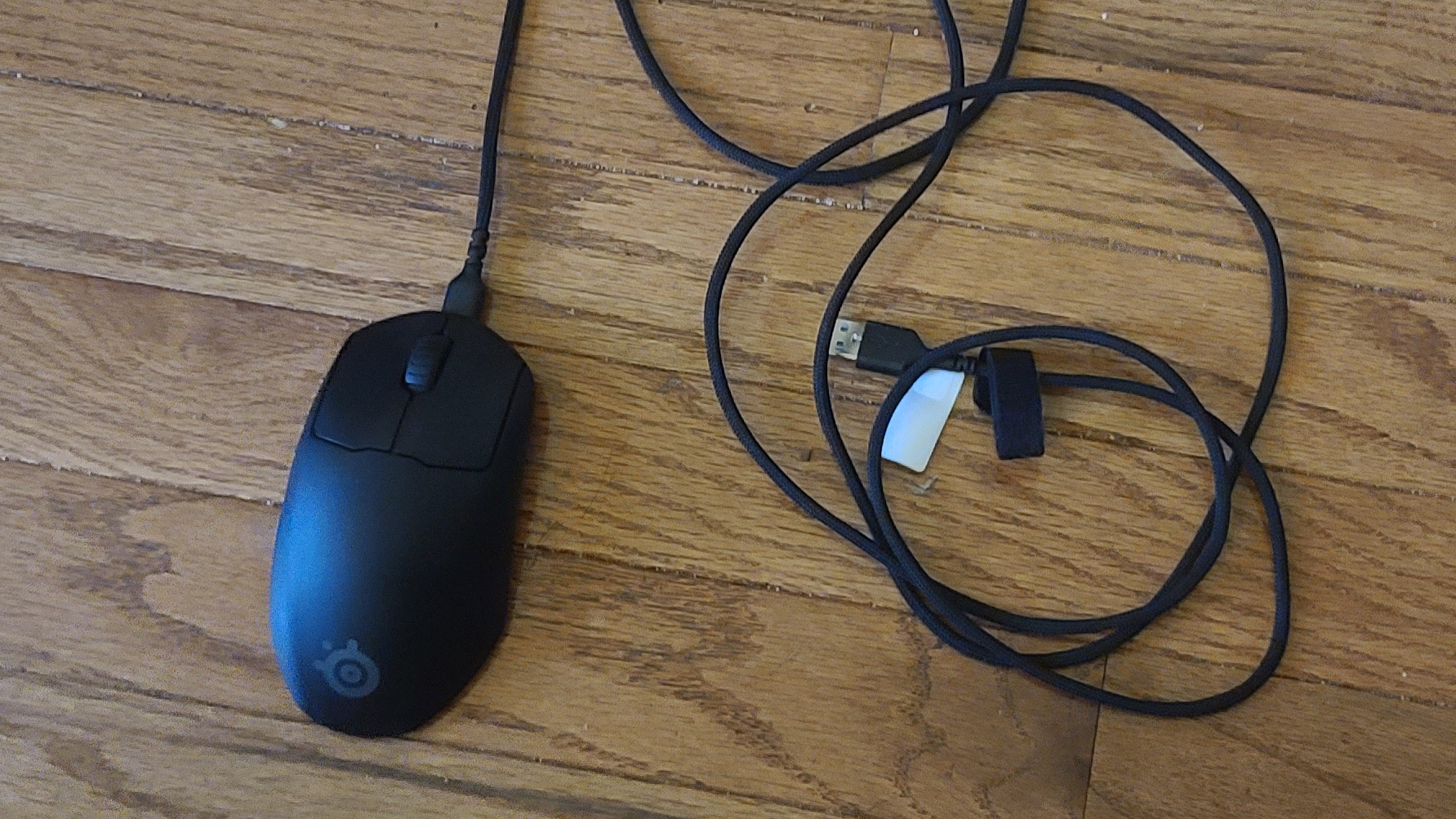
The Steelseries Prime Mini is true to the Prime series mission of providing a professional-grade gaming mouse in a small, lightweight package, and it’s even smaller and lighter than previous models. The Prime Mini weighs in at 61 grams (0.13 pounds) versus the 69 g (0.15 pounds) of its larger sibling, and it’s a full 12 g lighter than its wireless counterpart. The design is understated, opting for sleek curvature over sharp angles, and the finish is an attractive matte black with the Steelseries logo in gray at the base of the mouse. The scroll wheel features the only RGB lighting on the entire mouse.
Ultralight gaming mice are primarily aimed at serious competitive gamers and esports pros, as the reduced weight and smaller footprint promote an economy of motion. This not only provides a direct competitive benefit, it can also reduce strain and fatigue.
The button layout is simple and should feel familiar to anyone who has used a Steelseries mouse before. There are two slightly offset primary right and left click buttons with a notched scroll wheel at the center and two side buttons on the left side of the mouse’s body. In place of a typical thumbrest is an indentation in the side of the body below the side buttons – not only was this comfortable, but it also helped me avoid accidentally clicking the side buttons. There is a button that governs DPI switching and polling rate adjustment is on the underside of the mouse above the sensor – short pressing this button cycles through DPI settings and long pressing cycles through polling rates. The five readily accessible buttons (including scroll wheel click) are programmable, which can make up for the lack of an accessible DPI toggle button.

The underside of the mouse features what Steelseries refers to as “100% pure virgin PTFE” glide skates, and they do a great job of keeping the mouse stable while adding minimal friction to movement. The feel of the skates does take some getting used to, as they cause the mouse to glide so smoothly that it seems like things could go off the rails at any moment. After a short adjustment period, the movement felt natural.
The Prime Mini’s buttons are very responsive, backed by the Prime Prestige Optical Magnetic switches. The mechanism is quite different from the more common switch types in that the spring is held in place with a magnet so each application of force and release is consistent. The click registers when the spring breaks a beam of infrared light. I did not notice a significant difference in actuation speed but the action did feel more consistent. The trade off is that the more common Omron switches feel less stiff and "snappier", more tactile.
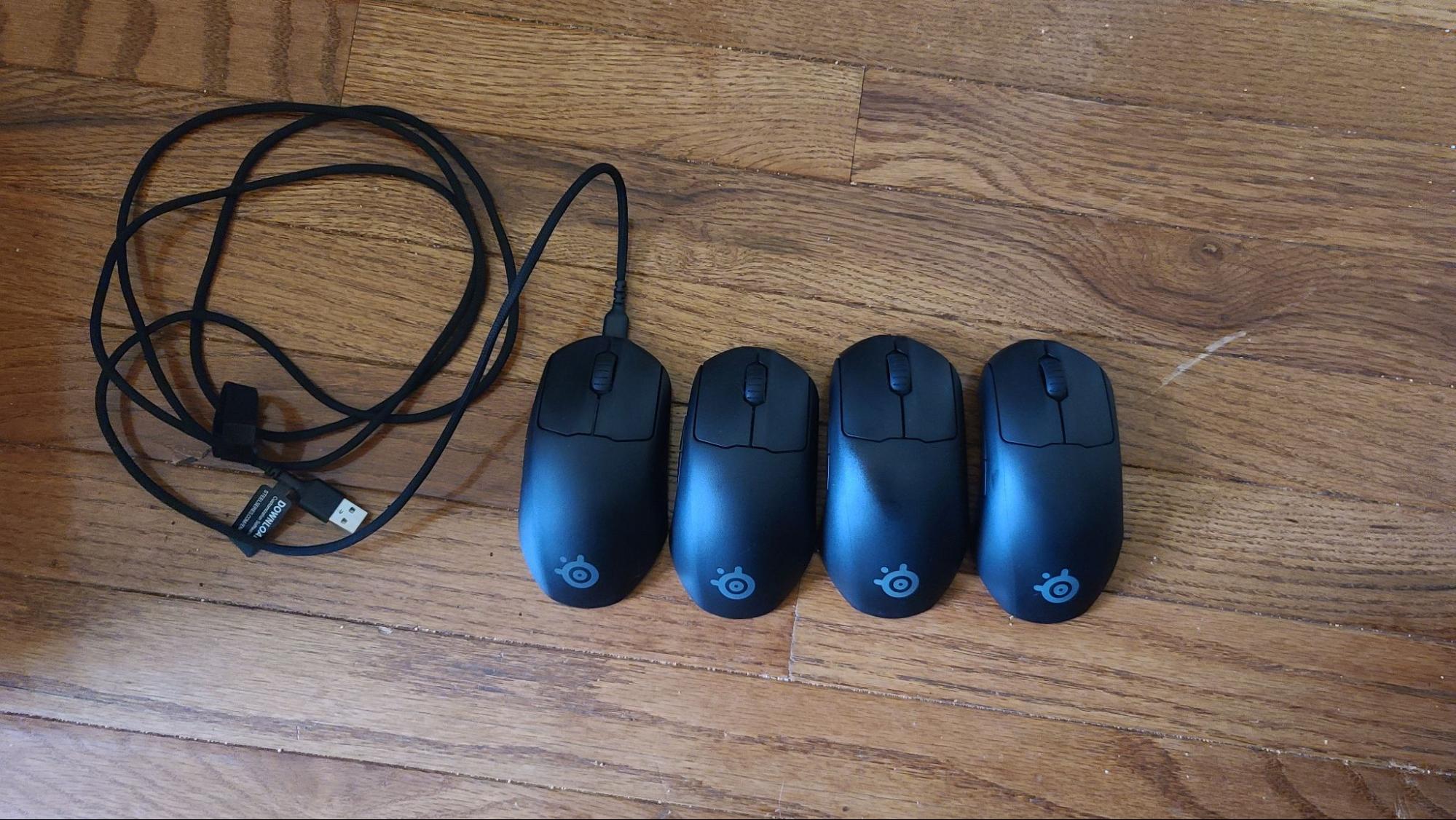
The overall design of the Prime Mini emphasizes simplicity and solves some common problems with small footprint mice in that the front of the mouse sits a bit higher than most mice of similar, diminutive stature. The backside of the mouse slopes downward at a more gradual angle than you’ll normally see elsewhere, making the Prime Mini more comfortable for larger hands. As a gamer with sizable paws, I was pleasantly surprised by this; here was a small mouse I could use comfortably for long periods of time. The Prime Mini is still too small for me to comfortably use my preferred palm grip, witha finger grip being much more suitable, but I suspect only gamers with larger mitts will face similar issues.
The cabling is lengthy (2m / 6.6ft ), braided and detachable. Despite its length, the microfiber material keeps the cable light.
Gaming Performance with the Steelseries Prime Mini
The Prime Mini performs admirably in games, and the Pixart-developed TrueMove Pro Gaming Sensor is on par with Logitech’s Hero sensor and Razer’s Focus+ Sensor in terms of accuracy. Movement felt about as close to one to one as you can get, and despite the adjustment period necessary to acclimate to the smooth gliding mouse feet, I never felt like I was overshooting my target.
The Prime Mini is particularly well suited to competitive FPS titles like Counter-Strike: Global Offensive, so that’s where I put it to use most. Despite my affinity for heavier pointers, I found that the Prime Mini’s accurate sensor and smooth action made me less apt to over-correct and stop short due to the dramatic difference in weight between it and my beloved G502. Before long, I was lining up and executing headshots with ease.

The Prime Mini likewise fared well in MOBA titles like DOTA 2 – I was able to make moves with pinpoint accuracy and cover the map smoothly. Much of this freedom of movement is due to the extremely light, microfiber mesh cable Steelseries has employed for the Prime series. The light feel of the mouse is complimented by a cable that doesn’t weigh it down and create drag – a common issue with super lightweight gaming mice.
I found that the default DPI settings worked fine for these titles, though it would have been beneficial to have a DPI toggle button that was easily accessible during gameplay instead of on the underside of the mouse. Remapping the side mouse buttons to accommodate these adjustments does resolve this issue, but some MOBA players are going to wish for more buttons. I personally didn’t consider this much of an issue because I prefer traditional keyboard bindings for abilities. This ease of movement also benefited me in RTS titles like Total War: Warhammer.
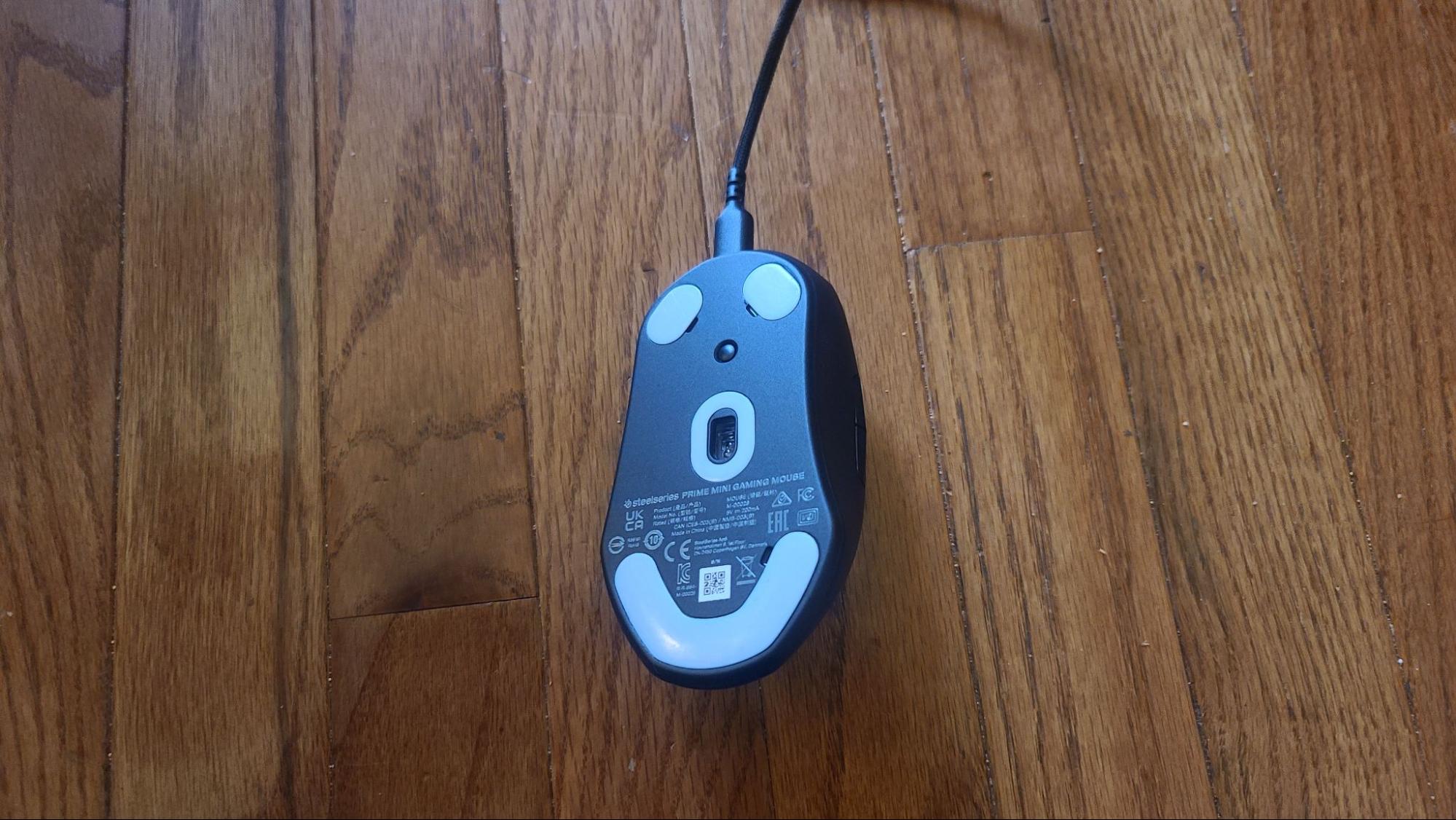
As good as the Prime Mini is, I still missed having a dedicated DPI downshift or “Sniper” button for making precise aiming adjustments while it’s held down. This is a common gaming mouse feature that I’ve come to rely on over the years. Its omission is somewhat understandable, considering the limited real estate on offer on the Prime Mini and the desire to keep things light. Despite this, I didn’t notice significant performance degradation on my part while using the Prime Mini, and that is significant given my general aversion to ultra light gaming mice.
Features and Software with the Steelseries Prime Mini
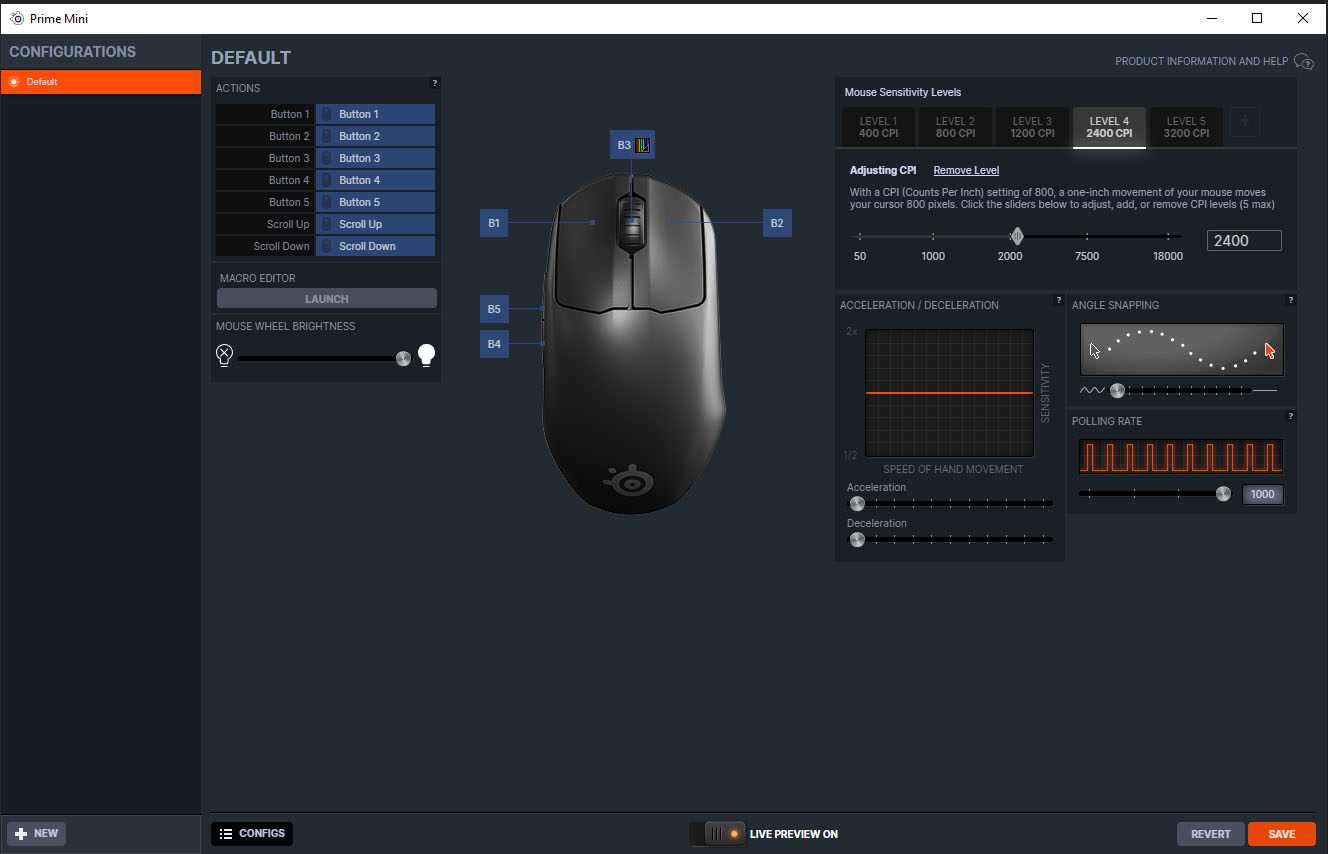
The Prime Mini makes use of the Steelseries GG Suite, with the primary point of interest being the Steelseries Engine software. From within the software, you can remap the mouse’s button functions, build and assign macros, adjust acceleration, deceleration, angle snapping and sensitivity levels, change the polling rate and play with the lighting of the single RGB zone on the Prime Mini’s Scroll Wheel.
Angle snapping effectively “smoothes out” the line your mouse pointer travels at by predicting movement in a straight line. This can be very useful for design and productivity tasks but it is best left alone for gaming applications.
Sensitivity adjustment can be edited in five increments, by default this is set to a minimum of 400 DPI and a maximum of 3,200 DPI. The absolute minimum is 50 DPI and the absolute maximum is 18,000 DPI.
There aren’t a bevy of lighting options available, but the other customization tools at your disposal more than make up for that. It certainly helps that Engine is extremely easy to use, with a clean, clutter free UI.
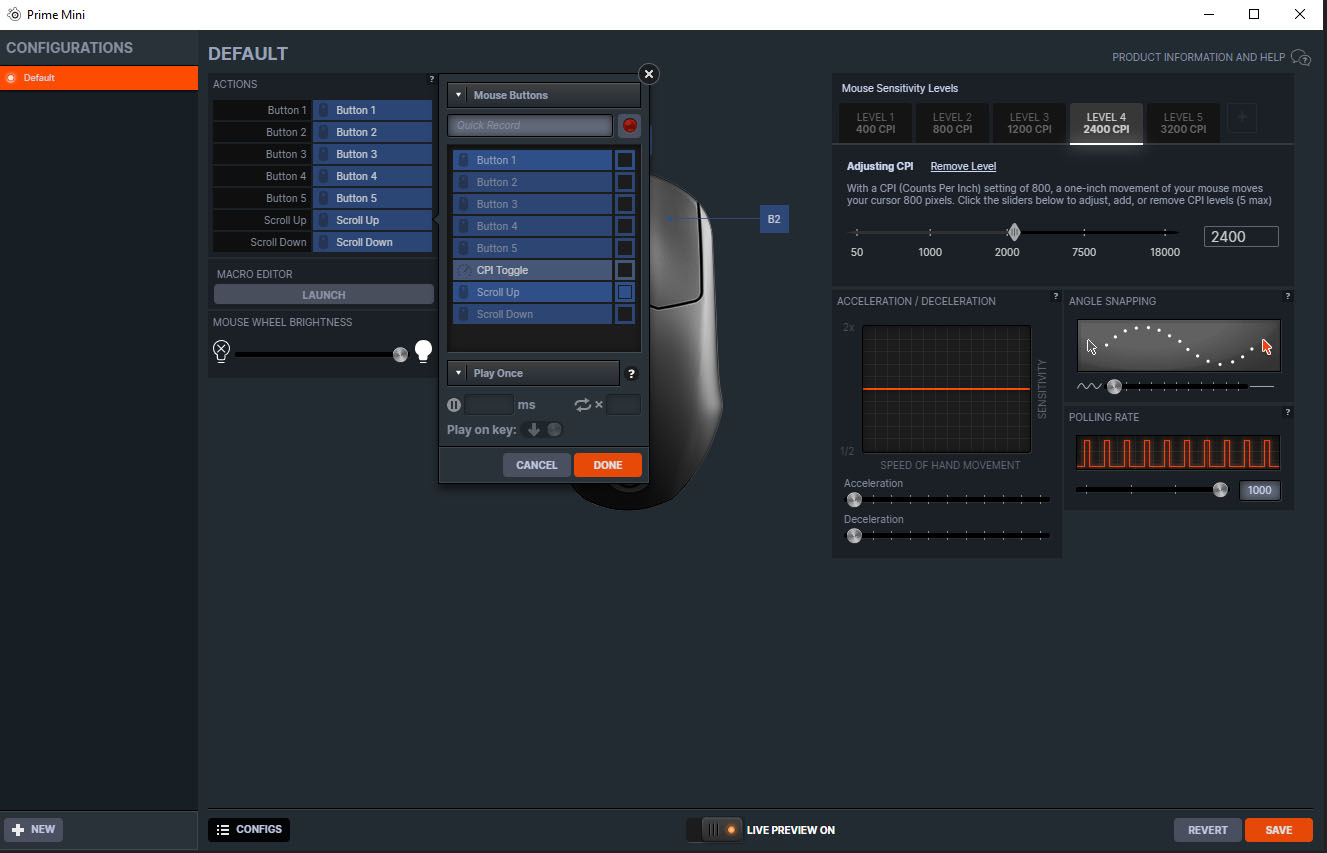
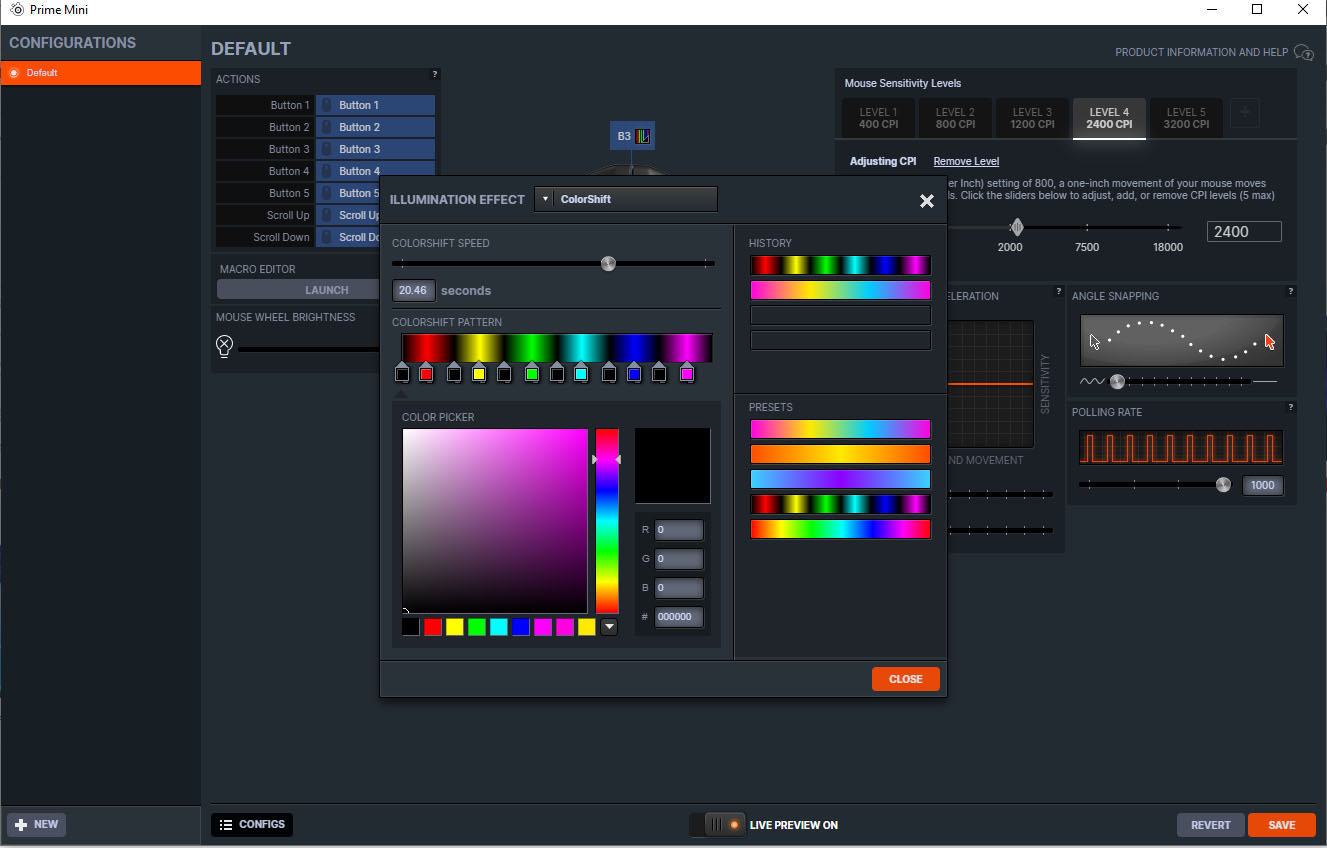
Bottom Line
The Steelseries Prime Mini is a minimalist, thoughtfully designed, ultra light gaming mouse offered at a very attainable price ($59.99 at press time) that holds its own against pricier competitors like the Razer Viper. The Prime Mini also has a slight edge for having superior ergonomics – this is a rare tiny mouse that actually feels good in larger hands, though some compromises still need to be made to grip style (a palm grip is simply not going to work if you’ve got big hands).
Thoughtful touches like super light, microfiber cabling and an indented thumb grip beneath the side buttons help make the Prime Mini comfortable and effective for long sessions by eliminating cable drag and making sure you don’t slip and misclick by accident. These may seem like small quality of life considerations, but in the context of heated, competitive play, they really matter.
While the Prime Mini is a great mouse, there are a few design choices that may not suit your taste. By default, DPI toggling is mapped to a button on the underside of the mouse, so accessibility during gameplay isn’t really possible without remapping the buttons.. The “Virgin” PTFE mouse skates can also take some time to acclimate to due to their smoothness if you’re used to movement with a touch more resistance. Lastly, the mouse buttons don’t feel quite as snappy as buttons backed by the more typical Omron mechanical switches found in many competing gaming mice. Most of these issues are a matter of taste, but since overall feel is extremely important, they are worth mentioning.
Steelseries has created an ultralight gaming mouse that still feels comfortable in larger hands with very little by way of compromise. As a gamer with monster paws, this isn’t going to replace the larger, weightier mice I generally prefer, but it was a very pleasant surprise. Accurate, fast, comfortable, well designed and affordable, the Prime Mini has earned its place among the best ultralight gaming mice currently available.

Nate Rand is a freelance reviewer for Tom's Hardware US, covering gaming headsets, keyboards, mice, and microphones.